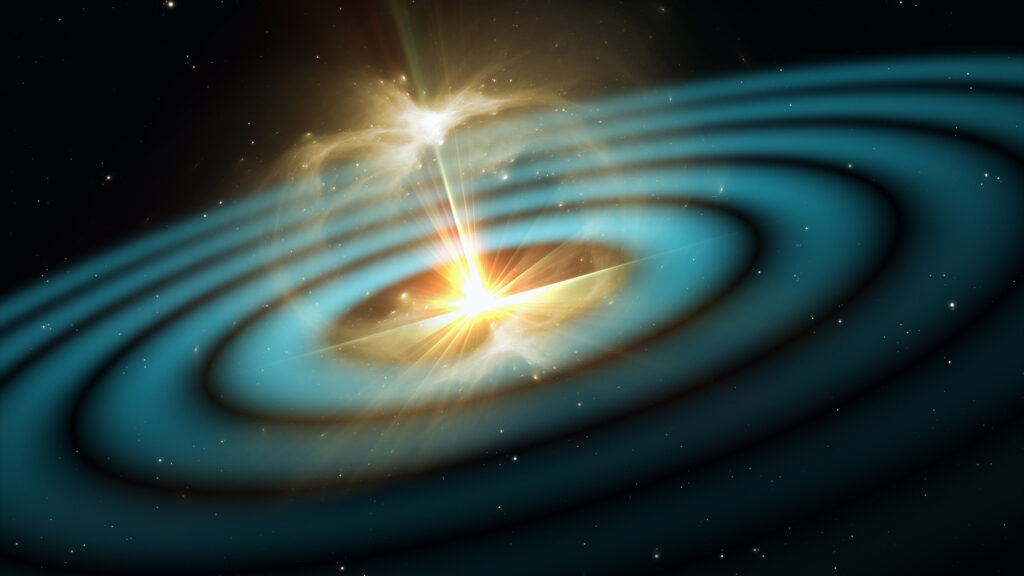The European Gravity Observatory, home to Virgo detectors, explains the value of record detection of 200 gravitational wave signals and collaboration in advancing understanding of the universe.
The Virgo, Rigo and Kagura collaboration recently announced the detection of the 200th gravitational wave signal, marking a key moment in the field of gravitational wave astronomy.
Located in Casina, Italy, the European Gravity Observatory (Ego) is home to Virgo, a cutting-edge facility that utilizes highly sensitive laser interferometry to capture the ripples of space-time instants caused by cosmic events.
Gravitational waves are produced by some of the most violent and energetic processes in the universe, such as the collisions of black holes and neutron stars. Their detection opens new realms of astrophysics, allowing scientists to observe phenomena that are invisible to traditional optical telescopes.
We talked to the ego and learned how this important achievement and the insights gained from these observations have committed to enriching knowledge of the universe and contributing to ongoing debates in astrophysics, cosmology and fundamental physics.
milestone
Reaching the 200 gravitational wave detection milestone indicates a transformative moment of gravitational wave astronomy. We are now firmly in the age of everyday detection, indicating that we can move from individual event analysis to population studies. This allows you to examine the astrophysical properties of compact objects such as black holes and neutron stars, their formation channels, and their distribution in the universe. The broader field of astrophysics opens a new window to understand the dynamics of the universe, complement traditional electromagnetic observations, and enrich models of star evolution, cosmology, and fundamental physics.
Virgo: Key Features and Technology
Virgo is a very sensitive laser interferometer with arms that are 3 km long in Cassina, Italy. Its core technologies include ultra-stable laser systems, precision mirror suspensions, seismic isolation platforms, and vacuum systems designed to minimize environmental noise. Virgo’s distinctive feature is its advanced mirror suspension system known as the “SuperAttenuator” which significantly reduces ground vibration. Additionally, the detector is equipped with sophisticated data collection and noise reduction systems, which are essential for extracting faint gravitational wave signals from the background of terrestrial noise.
Understanding gravitational waves through previous runs
Gravitational waves allow us to observe the universe in a completely new way through the “sound” of spacetime itself. They provide unique insights into phenomena that are invisible in traditional light-based astronomy, such as the merger of black holes and interiors of neutron stars. Three previous observation runs (O1, O2, O3) detected a wide range of events in binary black hole mergers, binary neutron star mergers, and neutron star-black hole systems. In particular, the detection of GW170817, the first merger of binary neutron stars observed in both gravitational waves and electromagnetic signals, launched the age of multimeth elephant astronomy, confirming theories about the origins of kironovs and the heavy elements such as gold and platinum.

Combination expertise: the value of collaboration
Global collaborations between Ligo (USA), Virgo (Europe), and Kagra (Japan) significantly improve both the sensitivity and the cover of the sky of the gravitational wave network. Each detector contributes to a unique orientation and geographical location that is important for triangulating the location of the sky’s gravitational wave source. In particular, Virgo plays a crucial role in narrowing down the localization of the sky, even when the signal-to-noise ratio is modest. Kagra adds a crucial fourth node, increasing detection reliability and improving parameter estimation. Together, the network can alert astronomers around the world in real time, facilitating rapid follow-up observations across the electromagnetic spectrum.
Advances in Multimes Astronomy
The current observations continue to be built on the foundation built by GW170817. We have increased coordination with observatory observations around the world, allowing for rapid follow-up of gravitational wave events. Although the confirmed multi-female seat detection is not consistent with the effects of GW170817, several candidate events have caused extensive electromagnetic and neutrino follow-up, improving understanding of the source environment and emission mechanisms. Integration of gravitational waves into the Multi-Mess Garger framework allows us to explore questions ranging from the velocity of gravity to the equation of state of neutron stars.
Improved sensitivity and detection capabilities
Virgo has undergone significant upgrades to increase its sensitivity, including improved mirror coating to reduce thermal noise, upgrade to laser systems for better stability, and reducing quantum noise in diagonal light technology. We also improved the earthquake separation system and introduced advanced data analysis algorithms for better signal extraction. These improvements allow Virgo to detect weaker and farther sources, increasing both the event rate and scientific yield for each detection.
The role of community collaboration and data sharing
Community collaboration and open data sharing are the basis for our success. Rapid public alerts and open data policies enable scientists around the world to contribute to the analysis and interpretation of gravitational wave events. This joint model has enabled rapid scientific breakthroughs, including the identification of Kironova in GW170817. It also brings together experts in astrophysics, nuclear physics, cosmology and data science to promote interdisciplinary research and maximize the impact of all detections.
Future research and observation goals
In the near future, Virgo and Ego are aiming to complete an ongoing observation run and prepare for the next observation run with even greater sensitivity. Beyond that, we are laying the foundation for next-generation detectors, the Einstein telescope, a European project that pushes gravitational wave detection to unprecedented levels of sensitivity. The ego will continue to serve as a hub for European gravitational wave research, expanding its role in education, outreach and coordinating global efforts. As the field matures, egos become central to fostering innovation and international cooperation in gravitational wave science.
This article will also be featured in the 22nd edition of Quarterly Publication.
Source link

